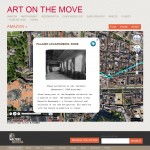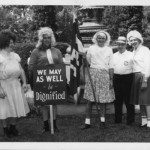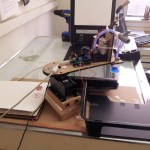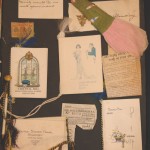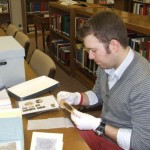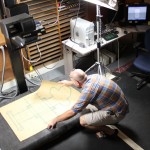¶ 1 Leave a comment on paragraph 1 0 “So, how do we bring students to our table?” That was the question a special collections librarian asked in 1999.[1] Now, in 2012, the question is no longer how: “Teaching with primary source materials is unquestionably ‘hot’ in higher education [as] authentic rare books, manuscripts, or archival documents” appear in many undergraduate classrooms.[2]
¶ 2 Leave a comment on paragraph 2 0 The table is full; the effort to bring undergraduates into special collections and archives has been enormously successful. What matters now is how to turn these encounters to account. What happens in the archival laboratory, a place where students are actively involved in research, stewardship, publication, and exhibits? How do librarians, curators, archivists, instructors, and technology specialists collaborate to get such projects off the ground? How do we make use of these encounters to develop research and interpretive skills, showcase students’ findings, and learn from their discoveries? What do students report that they have gained through their archival experiences?
¶ 3 Leave a comment on paragraph 3 0 In this issue of “Archives, Remixed,” we present six case studies illustrating inventive solutions to these dilemmas of success. The parameters and formats of these projects demonstrate the diversity of ways to teach with primary source materials: not all of the projects take place in a classroom context (although some do); not all the student work is authored singly (although some is). Some projects involve one institution, while others involve partnerships with local organizations or other universities or colleges; some projects are more analog, others more digital; and some end when the student’s work is complete, while others continue. The projects all have historical claims, but the array of objects under consideration—architectural drawings, photographs, ancient statuary, newspaper clippings, rare books, personal mementos—speaks to many disciplines. The academic institutions where these projects originate, from a community college to liberal arts colleges to a research university, vary as much as the projects themselves.
¶ 4 Leave a comment on paragraph 4 0 Each case study focuses on the work students produce in these archival encounters. On each case-study page, you will find a sample of student work accompanied by a project description; commentary on the project by the student(s); commentary from the teachers, librarians, and/or technologists who structured the projects and guided students through them; as well as links to related or additional resources.
¶ 5 Leave a comment on paragraph 5 0 We invite you to explore, to comment, and to use these case studies as fodder for your own research and teaching projects.
